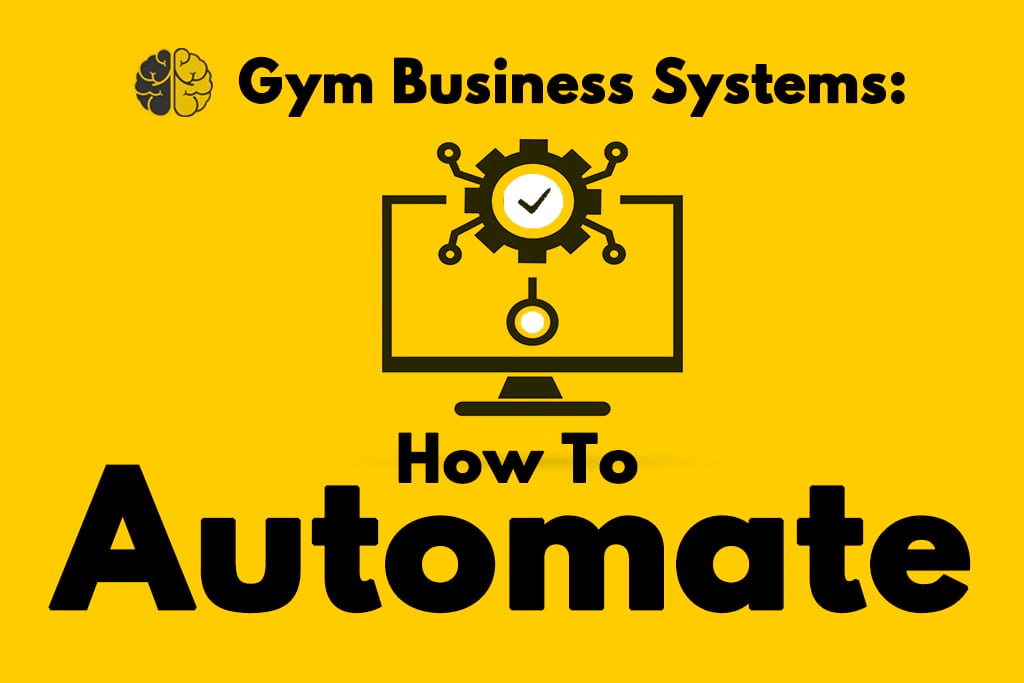Automation is a wonder. It can take work off your plate. It can ensure that repetitive tasks aren’t skipped. And it can help you work on new stuff.
But many gym owners treat automation like abdication: They allow software to manage their client relationships on their behalf. Or they outsource their marketing to an uncaring agency. Or maybe, instead of understanding the process themselves, they simply tell someone else, “You’re responsible for this! Figure it out!”
Only after testing your processes and optimizing them should you turn to automating parts of your business. Don’t bring in an automated “solution” until you’ve walked the path yourself. Set deep tracks for others to follow. And automate the right process.
For example, many coaches actually lose clients because they rely too much on automated texts, emails and prebuilt programs.
Instead of sending a personal text, they set up an automation: “Hey, it’s me. Checking in on you … .”
This is sometimes playing with fire. If you send a text about “top tricks to lose weight this weekend” and your client doesn’t care about weight loss, it’s going to become quickly obvious that he or she is not getting your personal attention. Don’t let automations make you lazy in relationships.
Human Automation
Back in 2010, it was briefly popular for gym owners to give their staff a share of the business but require that the staff members find new clients and sign them up. Gym owners weren’t automating a proven process; they were simply saying, “I don’t know how to do this. Maybe you don’t either, but figure it out or you’re fired!”
Hundreds of gyms adopted this practice. I don’t expect many to remember this one because those gyms are mostly gone now. That was the wrong way to automate.
Automation can sometimes mean using software. There are certain instances where you can automate your client journey: housekeeping items (“Here’s your waiver!”), program introductions, FAQs and weekly reminders for routine tasks (“Don’t forget to take a picture of your meal today!”).
Automation can also mean routine tasks for humans. For example, write a process for your staff: “Text 20 former members every Friday to see how they’re doing.” The task is automated—you don’t have to tell anyone to do it—but not computerized. See the difference?
When automating through a human, you want to put the best human for the task in that role. Not everyone is great at communicating through text, for example. If your coach can’t send a text without spelling mistakes, he or she is not a great fit. I’m not great at using emojis or GIFs, so I have others do the texting for me.
The key to all of this: Don’t jump to automation too fast. Telling a staff person to “text everyone every day” won’t work; you need to test the system yourself, record what works, optimize your delivery and then hand it off.
Software Automation
Now, there are some systems where software really does help. Tracking attendance, tracking progress and billing your clients—those are great examples.
But which software is best for managing your gym and taking these automated tasks off your plate?
Every year, we run an objective review of gym management software.
Most of the opinions you’ll find in Facebook groups and websites aren’t backed by data and testing. The user hasn’t tried any other options, so n = 1. We want to hold each platform against the same set of tests and rank them. The results are here:
The 7 Best Gym Management Software Platforms: Our 2022 Review
Is your software working? Here’s a test:
Open your gym management platform and start a stopwatch.
How long does it take for you to determine your:
1. Length of client engagement (LEG).
2. Average revenue per client per month (ARM).
3. Total revenue.
4. Profit (if your platform allows you to do so).
5. New members.
6. Lost members.
7. Net membership.
8. Lifetime value (LTV).
If you’re a Two-Brain client, instructions for each calculation can be found on the Growth ToolKit: Metrics Reporting, Milestones 1-3. Use the Two-Brain Dashboard to track your metrics and see growth over time.
If you’re not a Two-Brain client yet, download a free spreadsheet for tracking your metrics here.
Record your time to get all these numbers. If it takes longer than 10 minutes, just record your system for tracking your metrics. Use a screen-capture tool to record your process for pulling your metrics out of your gym management system. Try to do it faster next month.
If it takes longer than 30 minutes, that’s not ideal. But ask yourself: Can you do it faster next time now that you know how?
If it takes longer than 60 minutes, consider switching software platforms.
Gym Business Systems: Your Foundation
Your business is the sum of its systems. The best businesses follow the path of systemize, optimize, automate. We walk gyms through this step by step in our RampUp program.
The worst gyms require their owners to constantly fight fires, jump from idea to idea, and eventually abdicate their businesses to software platforms (and pay thousands for them every month).
The best gyms rely on systems that are constantly audited and revised. And some of them are automated. That allows the owner to increase efficiency, improve service and focus on building a long-term personal relationship with each client.
Other Media in This Series
Gym Business Systems: How to “Survive a Bus Crash”
Gym Business Systems: Optimization

